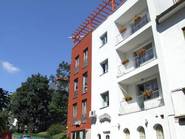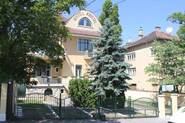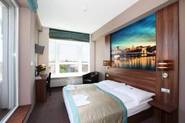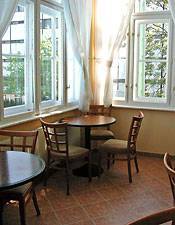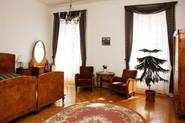While we generally champion the virtues of getting around cities by foot, Budapest is not really a pedestrian's city. Buda's hills make walking more of a hike than a stroll, and Pest is fairly spread out, so walking is convenient only in certain areas. Luckily, the city is well-equipped with a metro system (over a century old!), trams, funiculars and summer ferries, so there's no scarcity of alternatives.
Getting Around Budapest

Metro
Budapest's first Metro line was built in 1896 and it's still kicking. How's that for longevity? Because the Budapest Metro has retained its original style, the yellow M1 line is not only a means of getting to the sights, but also a sight in its own right. Whether you have some place to go or not, we recommend that you hop on one of its quaint wooden cars and head to the Opera House, one of the original stops which is beautifully preserved and depicts the history of the subway on wood panels.
The M2 and M3 lines are more modern than the M1. Though there is only one track per line, the trains run every two to three minutes during rush hour and are invariably on time. When in doubt, rely on the digital signs in stations to learn when the next train will arrive.
Tram and Bus
If you're headed somewhere the Metro can't take you, never fear. Chances are good that you can get there on a tram or bus.
Though trams are frequent, efficient, and go nearly everywhere visitors want to go, there are some places you can get to via bus only. Castle Hill, for example. The Castle Bus (Várbusz) and tram line 16 both make trips up the hill. For getting around after dark, night buses, marked by an "E," are very reliable, in spite their limited service.
Tickets
Metro, tram and bus lines run on the same ticket system. Buy tickets before boarding at Metro stations, tobacconists or vending machines at bus and tram stops in the city center. A single ticket, good for one journey on one leg of transport, costs HUF320. A transfer ticket is good for one journey plus a transfer from one type of transport to another and costs HUF490. A 10-ticket book costs HUF2800.
For longer stays, consider a one-day travel card, which costs HUF1550, a three-day travel card, which costs HUF3850, or a seven-day travel card at HUF4600. A family pass, which can be used by one or two adults traveling with up to seven children, costs HUF2200 and is good for unlimited rides in a 48-hour period. For more information, visit the BKV site.
Note: When you purchase a Budapest Card, unlimited free travel is available.
A word of caution: ticket inspectors—both uniformed and in plain-clothes—wander the public transportation system just waiting to catch you without your ticket. Be sure that you always validate your ticket and always have it with you, as they can ask to see it at any time, even when you have left the train. Or you can buy the one-, three- or seven-day pass and avoid the issue altogether. These passes don't need to be validated at every use.
Funicular and Ferry
As if the extensive public transit system weren't enough, Budapest is crammed with one-off transportation too. The funicular (sikló) has been taking visitors from the Chain Bridge to Castle Hill since 1870. Though it's pricier than the bus options, many visitors find it more charming and historic. Tickets cost HUF840 one-way and HUF1450 round-trip for adults and HUF520 one-way/HUF940 round-trip for persons under 18.
The ferry runs up and down the Danube from mid-May through September. Hop on at IX Boráros tér and hop off at one of 10 stops along the way to III Rómaifürdő, or stay on for the full two-hour journey to get a beautiful ride along the Danube for less than the cost of a tourist boat. The journey costs HUF900 (adult) and HUF450 (child) from end to end or between HUF250 (adult)/HUF150 (child) and HUF600 (adult)/HUF300 (child) for intermediate stops.
Taxi
We've said it before and we'll say it again: be careful with taxis in Budapest. Avoid taxis with no names on their doors, as well as those with removable taxi lights on their roofs. Legitimate cabs have yellow license plates and display identification badges on their dashboards. Also look for taxi operator logos and fare tables.
Taxis, on the average, charge HUF240/km during the day and HUF336 at night max. It is customary to tip your driver 10 percent depending on your satisfaction with their service.
As a general rule of thumb, don't flag down a taxi in the street. Instead, call a taxi service and arrange for pick-up or have your hotel call for you. Calling ahead of time instead of hailing one in the street usually means cheaper rates.
On Foot
Unless you're up for a hike, you'll almost always want to take public transportation in the hilly Buda, and in Pest the sights are spread out enough to make walking a less than completely desirable way to get around.
That said, walking does have its virtues in some parts of the city. We recommend being a pedestrian in the historic Belváros district, which is compact, quaint and pedestrian-friendly. Other pleasant places to amble include both sides of the Danube, or the lovely Andrassy Út, which is jam-packed with enough sights to reward a pleasant stroll.

